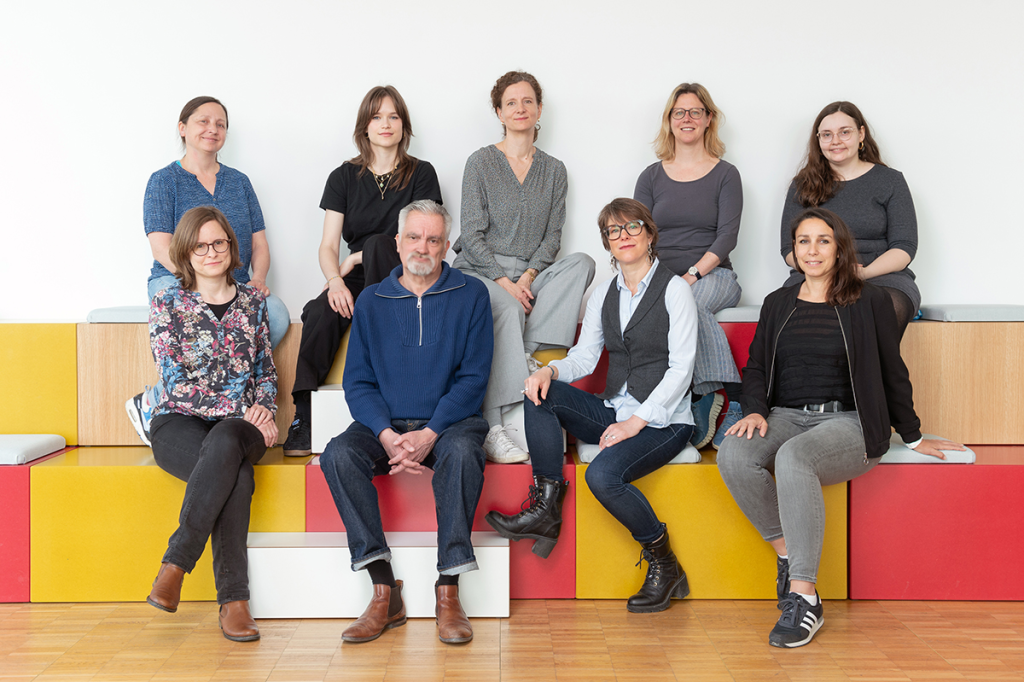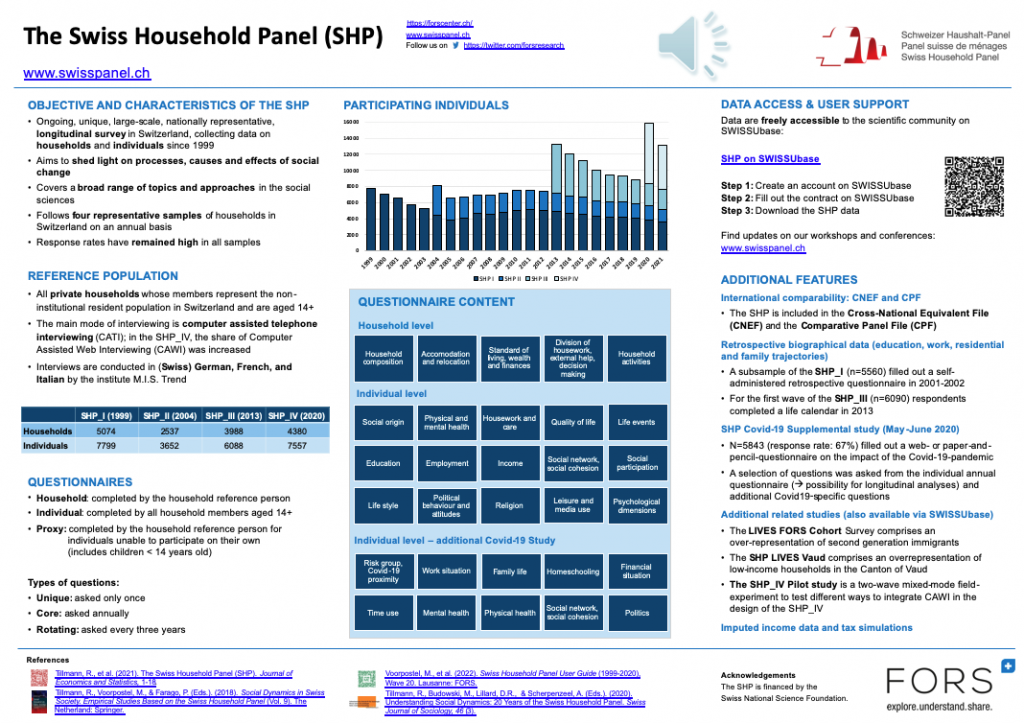DOCUMENTATION
The SHP constitutes a unique longitudinal database for Switzerland and is mainly financed by the Swiss National Science Foundation. The survey covers a broad range of topics and approaches in the social sciences. Data collection started in 1999 with a sample of 5’074 households containing 12’931 household members. In 2004, a second sample of 2’538 households with a total of 6’569 household members was added. Since 2013, the SHP contains a third sample of 4’093 households with 9’945 individuals and in 2020 a fourth sample has been added with 4’380 households and 7’557 individuals. Response rates have remained high in all the samples.
The data from the Swiss Household Panel is freely accessible to the scientific community on SWISSUbase (see data).
The SHP has two main purposes:
- Ensure a solid database for social reporting on stability and changes in living arrangements and well-being in Switzerland, which complements data collected by the Swiss Federal Statistical Office;
- Promote opportunities for quantitative social science research, by making high quality data available to Swiss social scientists and to the international social science research community.
Between 2013 and 2019, the SHP team was also involved in the realization of the related LIVES FORS Cohort Survey and between 2013 and 2018, the SHP conducted the SHP LIVES Vaud in collaboration with the NCCR LIVES and the canton of Vaud.
If you are interested in the history of origins of the SHP, we invite you to read our overview publication here.
SHP MAIN STUDY DOCUMENTATION
- Questionnaires main study
- Questionnaire SHP Covid-19 study
- Biographical questionnaires SHP_I
- Life calendars SHP_III
- Questionnaires for interviewers
Budowski, Monica; Niklowitz, Matthias; Scherpenzeel, Annette; Tillmann, Robin; Wernli, Boris; Zimmermann, Erwin (1998). Aims and Architecture of the Swiss Household Panel.
Budowski, Monica; Niklowitz, Matthias; Scherpenzeel, Annette; Tillmann, Robin; Wernli, Boris; Zimmermann, Erwin (1998). Description of Life Domains and Indicators of the Swiss Household Panel.
Dangubic, Marija; Voorpostel, Marieke (2017). Computer-assisted web interviewing (CAWI) in the Swiss Household Panel: demographics, participation and data quality.
Dangubic, Marija; Voorpostel, Marieke (2017). Refusal conversion in the Swiss Household Panel 1999-2015: An overview.
Tillmann, Robin, Marieke Voorpostel, Ursina Kuhn, Florence Lebert, V-A. Ryser, Oliver Lipps, Boris Wernli, and Erika Antal (2016). The Swiss household panel study: Observing social change since 1999. Longitudinal and Life Course Studies 7, no. 1: 64-78.
Tillmann, Robin, Voorpostel, Marieke, Antal, Erika, Dasoki, Nora, Klaas, Hannah, Kuhn, Ursina, Lebert, Florence, Monsch, Gian-Andrea and Ryser, Valérie-Anne (2022). “The Swiss Household Panel (SHP)” Jahrbücher für Nationalökonomie und Statistik, vol. 242, no. 3, pp. 403-420. https://doi.org/10.1515/jbnst-2021-0039
Voorpostel, M., Kuhn, U., Tillmann, R., Monsch, G.-A., Antal, E., Ryser, V.-A., Lebert, F., Klaas, H.S., & Dasoki, N. (2020). Introducing web in a refreshment sample of the Swiss Household Panel: Main findings from a pilot study. FORS Working Paper Series, paper 2020-2. Lausanne: FORS.
WEIGHTS
Antal, Erika & Rothenbühler, Martina (2015). Weighting in the Swiss Household Panel. Technical report.
INCOME AND WEALTH
Kuhn, Ursina (2025). Imputed rental value in the Swiss Household Panel.
Kuhn, Ursina (2010). Monthly wages in the Swiss Household Panel.
Kuhn, Ursina; Schmid, Flurina (2009). Tax simulation in the SHP. Data documentation.
Lipps, Oliver (2010). Income imputation in the Swiss Household Panel 1999-2007.
SOCIAL STRATIFICATION
Joye, Dominique; Bergman, Manfred Max; Budowski, Monica (2002). Technical Report of the Swiss Household Panel: Recodification of Variables for Five Social Stratification Schemas.
SEARCH TOOLS





 Bâtiment Géopolis,
Bâtiment Géopolis, +41 (0)21 692 37 30
+41 (0)21 692 37 30

